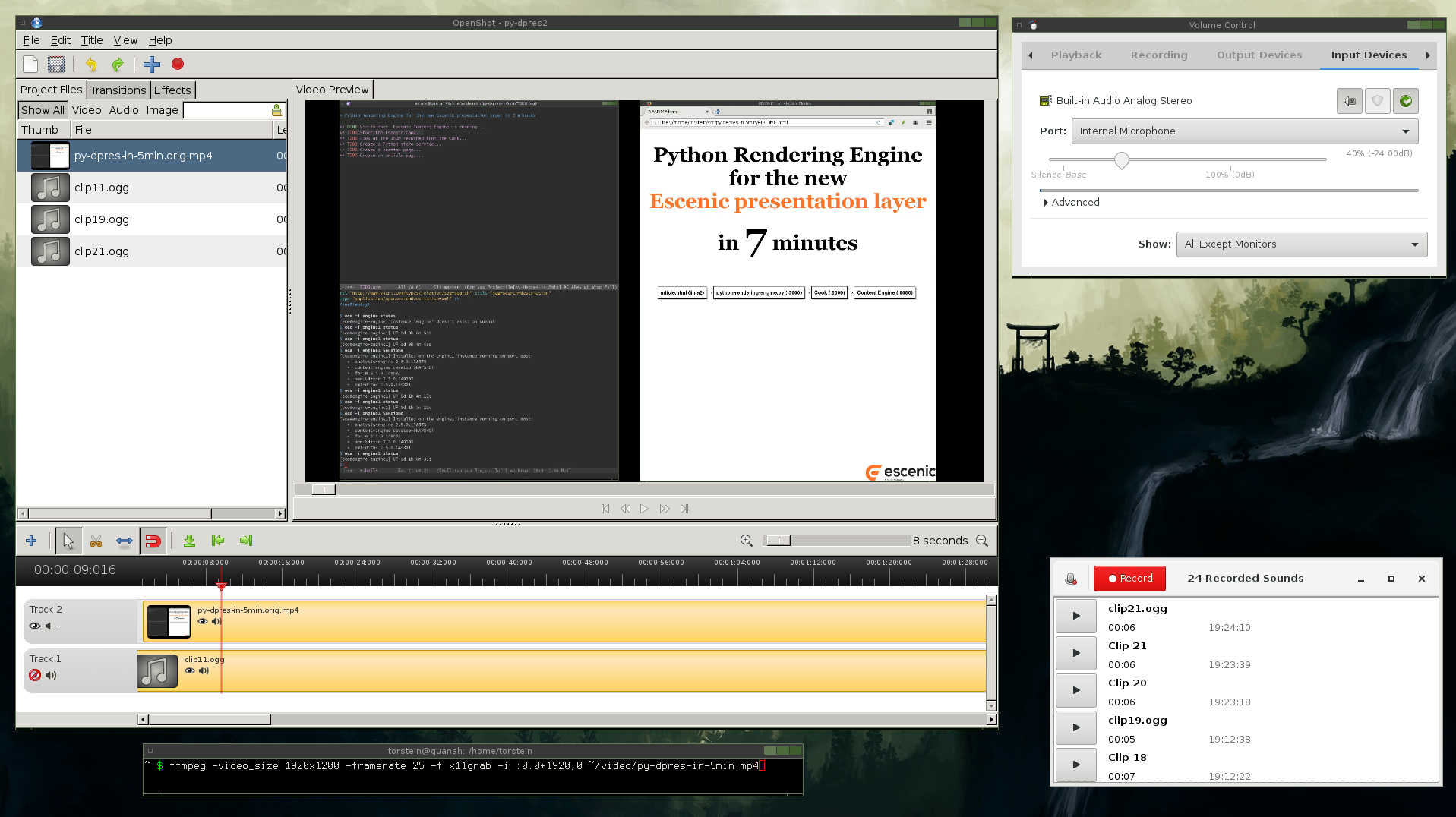These are the tools I use on to record screencasts, record sound, combine the two, edit the video and create the final result.
Capture video
I use the excellent and extremely powerful command line tool ffmpeg:
$ ffmpeg -video_size 1920x1200 \
-framerate 25 \
-f x11grab \
-i :0.0+1920,0 \
~/video/my-video.mp4
Record sound
Earlier, I recorded the sound at the same time as the video. This was incredibly hard, to both type and talk at the same time. Also, the sound of me typing on the keyboard as well as the laptop fan got onto the sound track, which was far from ideal. For these reasons, recording the video and sound separately is a much better solution, albeit a more time consuming one.
I use an external microphone and use the Pulse Audio Control dialogue,
started with the pavucontrol command, to choose the input device to
use as default. This is needed cause GNOME Sound recorder assumes the
default recording device.
Before, I used GNOME Sound recorder, for recording sound, however it gets confused when changing the default input device. I've therefore switched to using SoX and run it like this:
$ sox -t alsa default output.war
It produces high quality recordings without no fuzz.
Edit video
For editing video, I've used OpenShot. It's easy enough for me to understand and provides non linear editing, multiple tracks, export of various video formats and so on.
One thing I found important, was to select a high enough resolution
for the text in my screencast was clear and sharp in the end
result. For this, I chose a similar resolution and frame rate to what
I passed to ffmepg when recording the video.
Publishing your video
Both Vimeo and Youtube will serve you well here.
Conclusion
Creating screencasts, recording sound and video works fairly well on Linux, at least for casual users like myself 😊

